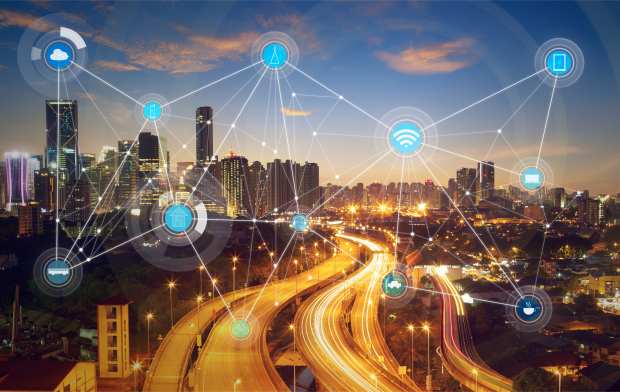Why IoT’s Ball Bearings Need Improving To Keep The Digital Economy Humming

After years of talk and theorizing, the Internet of Things — and that seems to be the label that will stick, at least for now — is finally coming together in concrete, measurable ways that are making impacts on the daily lives of consumers. Even so, there are still questions about how specific use cases being built via the Internet of Things ecosystem — or, perhaps more accurately, ecosystems — will actually evolve, and what challenges they will have to overcome.
One of those areas is transit, always a main concern for all types of consumers in pretty much every corner of the globe. Now, fresh PYMNTS research and interviews with experts in that field are coming together to shed new light on the world of transit in this emerging Internet of Things (IoT) world.
The latest Intelligence of Things Tracker, released earlier in January, found that by the end of this year — less than 12 months away — roads will carry some 250 million connected vehicles. And all those vehicles will provide commuters and other drivers and passengers the chance to do commerce and make payments, and otherwise engage with digital and mobile activities made possible by the growing but still-in-its-infancy IoT.
API Keys
One big key to the growth of IoT-enabled transit programs and technology is the availability of application programing interfaces (APIs). When it comes to connected commerce and payments — part of the broader IoT ecosystem — APIs, arguably, are moving closer to ball-bearing territory in terms of importance to many vital parts of the overall digital economy. As you might recall from history, business or engineering classes, modern manufacturing has relied and continues to rely heavily on the availability of various types of ball bearings. (In fact, the Allies in World War 2 tried desperately, and failed miserably, to cripple Nazi Germany by bombing its ball bearing capability to the point of practical extinction). The world of connected payments and commerce, to say nothing of financial services innovation, is nothing without ever better and more widely deployed APIs.
As the new PYMNTS research report finds, APIs have attained significant spotlight, making growth possible for many IoT-enabled devices and innovations. These interfaces empower everything from smart home devices to smarter transit systems. Indeed, the latest Intelligence of Things Tracker takes a deeper dive into the important of APIs to the growing ecosystems of so-called smart transit projects. That look provides lessons and reminders about why further innovation and deployment of APIs are so important not only to smart transit, but the Internet of Things as a whole.
Even in 2020, big, basic misconceptions about APIs still exist, and likely serve to dampen growth, at least in indirectly. One common supposition that exists is that APIs are one-size-fits-all, Eric Kaled, president of solutions-based smart city fare collection firm Genfare, noted in a recent interview with PYMNTS.
“I hear that a lot,” he said. “‘Oh, it is just an API. It should not be that hard, it should not cost that much money, it should not take that long.’ … I think that setting the right expectations and really understanding that [companies] have to design [these APIs is important]. You have to know what you are trying to get, [which data you are] trying to extract [and] how you are going to extract it. … [The process] is a little more complicated than what people assume.”
That’s not just theory. All of that matters in the so-called real world.
For instance, APIs are essential to Genfare’s mission of eliminating transit systems’ technological barriers to employing smarter, IoT-enabled solutions — APIs are vital to sparking more innovation and growth and, ultimately, more consumer buy-in and use. The company’s cloud-based fare collection solutions, which provide digital and mobile support for the Capital District Transportation Authority (CDTA) in Albany, New York, Porterville Transit in Porterville, California, and other U.S. transit systems, rely on them. APIs allow Genfare to more easily connect platforms to each other and to end customers, but further innovation will require education on their abilities and design process, Kaled explained.
Hype Problem
But like so much in the digital and mobile realms — and certainly in issues involving IoT, where practical, proven use cases still must compete with puffy expressions of hype and hope — thoughts about APIs can sometimes get ahead of facts on the ground. And that can obscure the real work that must go into making sure APIs function in such a way that encourages the spread of Internet of Things use cases.
APIs suffer from problems similar to those of artificial intelligence (AI) or blockchain in that their hype often exceeds their present usefulness. The interfaces are just bits of code that help platforms communicate, after all, but those connections must be tailored for each use case. Optimizing those connections is crucial for smart transits and a host of other IoT-related use cases.
The new PYMNTS research report goes into significant depth on the API and related issues that are hot right not as the Internet of Things gains more use and popularity. But even with the relatively skimpy examples offered above, it is clear how important it is to create and deploy better APIs.
